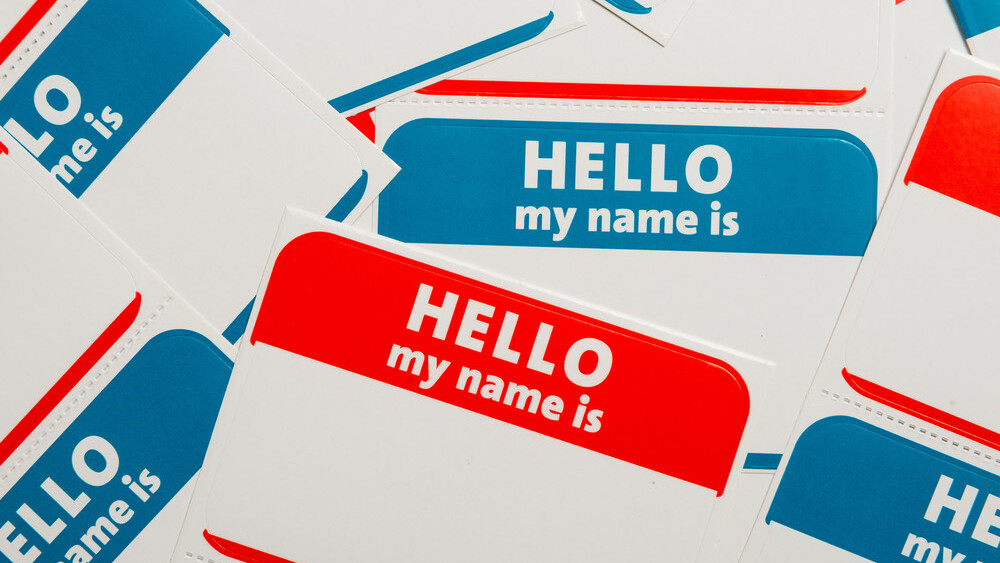
If you’re struggling to pick a name for your business, you’re not alone.
With every day that passes, there are new complexities at play. For one, you’ll need the perfect domain name that’s easy to remember and find. And with so many different domain options available, you’ll want to choose the one that best-reflects the actions you want your audience to take.
You’ll also need to pay attention to trademarks, copyrights, and other logistical considerations. For instance, will you be able to claim social media handles that are close enough to your business name?
But most importantly, your business needs to be well-positioned to grow with your brand.
It’s natural for companies, especially those that are early stage, to shift directions over time. If you don’t pick a name that is open-ended enough, you may unintentionally constrict your organic growth.
So how do you make sure that your business grows in the right direction?
Even though the process will look different for every founder and business, it’s important to avoid the following four mistakes:
1. Ignoring the needs of international markets
The internet makes it possible for businesses to reach customers all over the world.
As your brand evolves, you may want to one day reach audiences in markets outside of the ones with which you’re familiar. And when these opportunities present themselves, the last thing that you want is a business name that will hold you back.

Consider the case of Pickit, a Scandinavian aggregator of compelling photos to license.
“When our agency first met with Pickit, a Scandinavian startup, to help the company expand into a US market, their name was PicHit – a name that we immediately flagged as having potential phonetic difficulties due to the ‘ch’ phonetic,” says Andrew Skinner, senior account executive at Deliberate PR.
“With English not being their first language, it hadn’t occurred to the team that there might be some difficulties, and so we decided that a more sensible name was ‘Pickit.’”
As soon as you know what markets you’ll be targeting, check to see how people automatically pronounce your company name after seeing it in writing.
“This will help you avoid confusion, before it becomes an opportunity cost,” says Henrik Bergqvist, CEO and co-founder at Pickit.
2. Giving into the temptation of a ‘unique spelling’
In today’s day and age when so few domains are available on the market, it may be tempting to choosing a unique or creative iteration of a popular word. But if you’re taking this route, make sure to spend time face-testing how people respond to your name.
“A friend of mine just started a company that is ridiculously hard to spell from memory,” explains Derric Haynie, co-founder at SpashOPM, a company that specializes in online presence management. “It’s pronounced wise and ridiculously hard to spell from memory. That’s a branding nightmare for an early stage company.”
Don’t choose a one-off name, recommends Haynie, just because the domain is available. You need a name that’s easy to remember and spell.

“Otherwise, you’ll be telling people ‘that’s with a y and two zs’ every single time you announce your brand,” says Haynie.
3. Letting ambiguity confuse your customers
On the one hand, you want to avoid choosing a brand name for your company that is too constricting – your name should be broad enough to support your company’s long-term evolution.
But you’ll also want to support growth aspirations by naming your company in a way that helps you grow into the short term.
“If you’re just starting a company, it’s unlikely you’ll achieve the name recognition of big brands, such as Apple or Walmart, so a descriptive company name helps potential customers more quickly understand your purpose,” says Simon Slade, co-founder and CEO of Salehoo.
Choose a company name that speaks to your business intent.
“Word-of-mouth recommendations tend to help many early stage businesses grow,” says Slade. “But customers aren’t going to talk about your company if there isn’t a clear way to describe what you do.”

To strike the right balance between a name that can grow with your company and one that is descriptive enough to capture the value of what you’re selling in the immediate term, choose combinations of words that can help your customers understand your purpose.
Choose a name that clarifies the connection between your product and customer. Think about how you want your target audience to feel and what you want to help them achieve.
4. Feeling stuck on .coms
These days, it’s possible for a .com domain to cost upwards of tens of thousands of dollars — a steep barrier for anyone who is launching a company for the first time.
Early on in the Internet industry, companies needed a .com to establish an identity online. But today, a wealth of new options are available including .club, .academy, .me, and others.

Get creative in your domain selection process so that you can choose a name that truly represents your brand — don’t let the availability of a .com hold you back from building the perfect brand.
Final thoughts
One simple ‘hack’ when choosing and validating your business name is to think about your decision from your customer.
Face-test your ideas with individuals in your target audience. Avoid shortcuts, as tempting as they may seem, to secure a domain. Be clear about what you’re selling so that your customers can make a clear judgment call.
Make the most out of your name, whatever you end up choosing, and don’t let it hold you back from growing.
Get the TNW newsletter
Get the most important tech news in your inbox each week.





